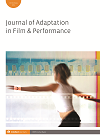
Full text loading...

The year 2021 marked the seventieth anniversary of the publication of J. D. Salinger’s The Catcher in the Rye, and the sixtieth of what is to date the only film adaptation of the novel. In 1961 the 22-year-old Krzysztof Zanussi made from behind the Iron Curtain, a short film entitled Holden, which referred directly to the novel’s characters and events. He did this despite Salinger’s ban on any form of adaptation of his work. The film, although faithful to the source novel, had a perversely Polish flavour. This article takes a translation studies approach to the discussion of how the specific sociopolitical circumstances in which the adaptation was made resonate in Zanussi’s picture. The focus is on the ways in which the concept of an imaginary America, so vivid and emotionally powerful among the Polish youth of the 1960s, determined the film’s narrative and domesticated the source text.

Article metrics loading...

Full text loading...
References


Publication Date:
https://doi.org/10.1386/jafp_00080_1 Published content will be available immediately after check-out or when it is released in case of a pre-order. Please make sure to be logged in to see all available purchase options.